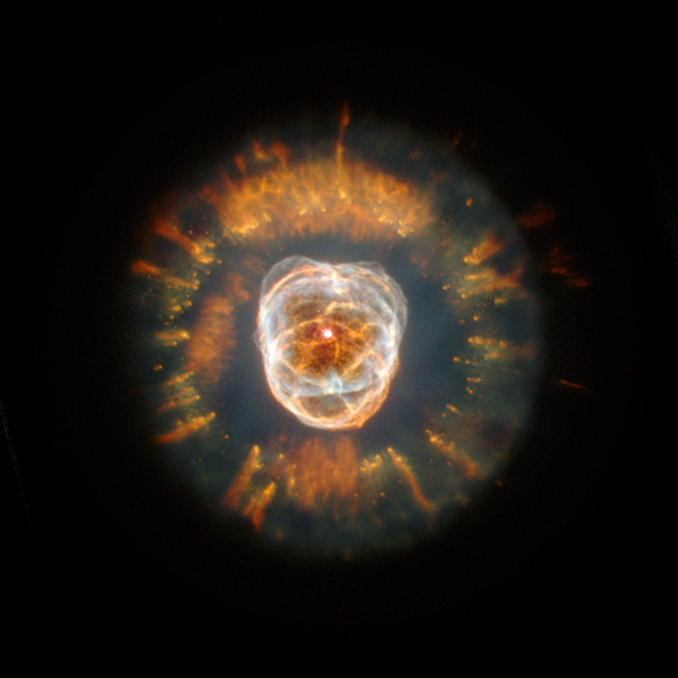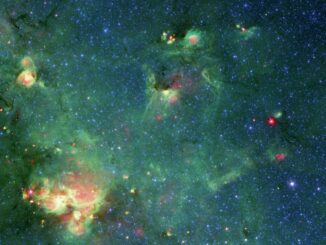
The Eskimo or Clown Face Nebula (NGC 2392 and Caldwell 39) in Gemini is arguably the finest planetary nebula in the winter sky. The Hubble Space Telescope’s iconic image from 2000 has featured heavily in astronomy publications and on the Internet, making the nebula one of the most famous and recognisable objects in the night sky.
Unlike many of Hubble’s spectacular portraits though, more humble Earth-based instruments such as a pair of binoculars or a small telescope can track it down and reveal much of the detail that makes it such a beautiful and tempting target on long winter evenings.
How to observe
Gemini lies high above the east-southeastern horizon by 7pm GMT. The familiar one-two punch of its bright-star pairing of magnitude +1.6 Castor (alpha [α] Geminorum) and magnitude +1.1 Pollux (beta [β] Gem) make a good starting point for locating the Eskimo. Starting from Pollux, travel south-westwards along the body of twin Pollux until you land on magnitude +3.5 Wasat (delta (δ) Geminorum), then move south by about 1.5 degrees to arrive at fifth-magnitude 56 Geminorum and finally track east by 1.75 degrees and nudge slightly north and you should spy the nebula at RA 07h 29m 11s and Dec 20° 54’ 39”. The Eskimo culminates at about 9.30pm at a favourable 60-degree altitude and remains on show until around 3am.
The nebula shines with an integrated magnitude of +9.2 and spans around 50 arcseconds, but its high surface brightness gives it an edge when it comes to looking for it through 10 × 50 binoculars. A telescope in the 80mm (~three inches) class when working at moderate- to high-magnification shows the nebula’s inner core (~15 arcseconds across), which, under good conditions and when close to culmination, can look distinctly bluish-green.
It’s fainter and mottled outer halo, or ‘Parka hood’, can start to be distinguished through perhaps a 150mm (six-inch) telescope, but you’ll need a larger aperture or an imaging rig to bring out some hints of those irregularities that are so prevalent in the Hubble image. The addition of an O-III filter will enhance your viewing whatever telescope you are using.




